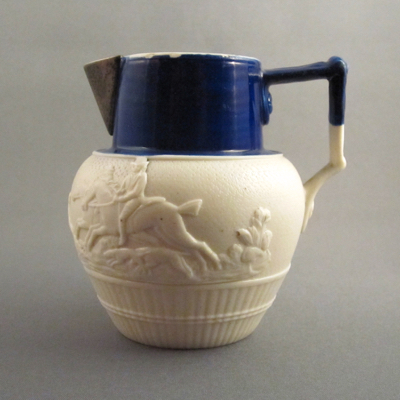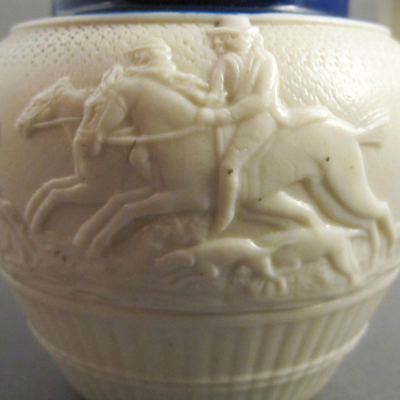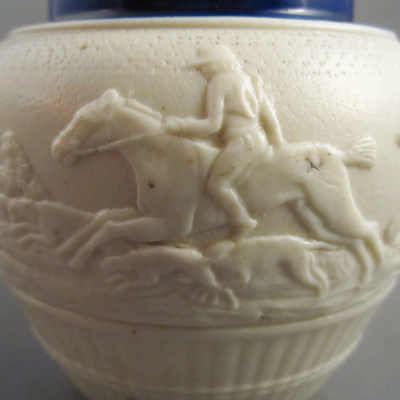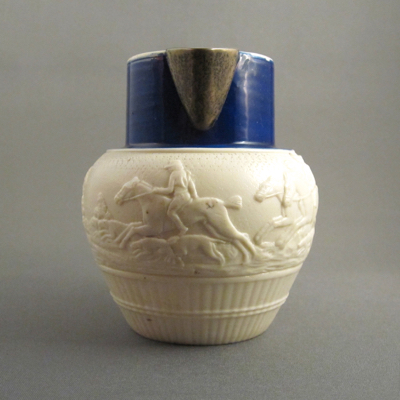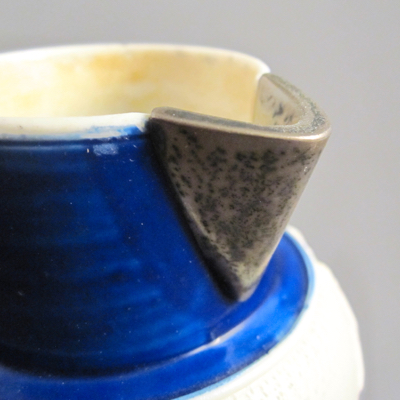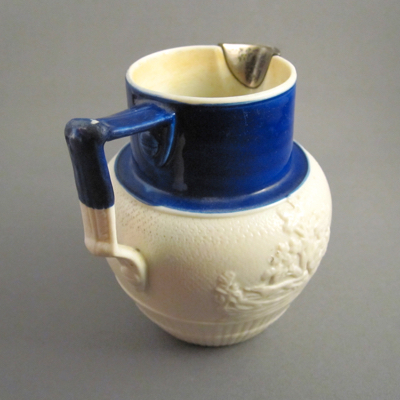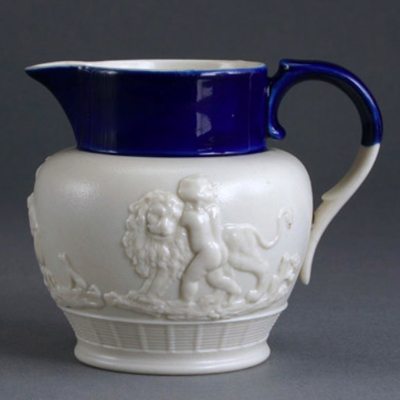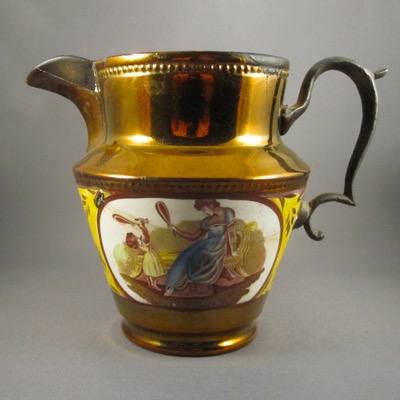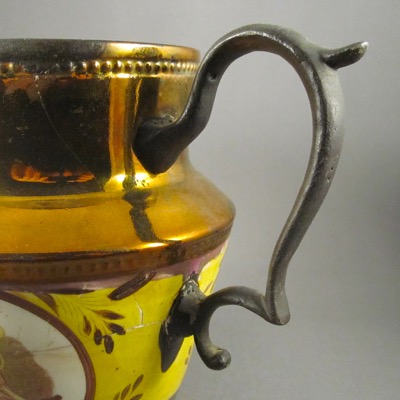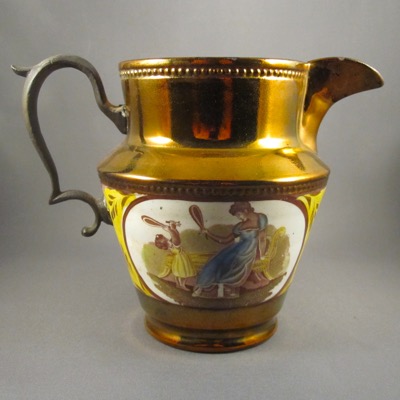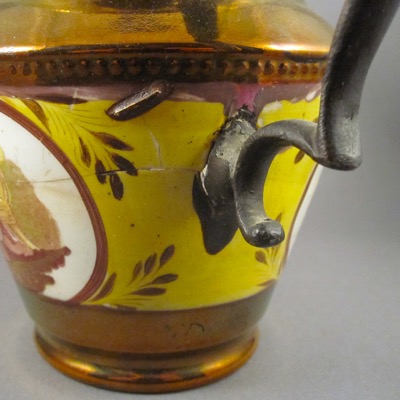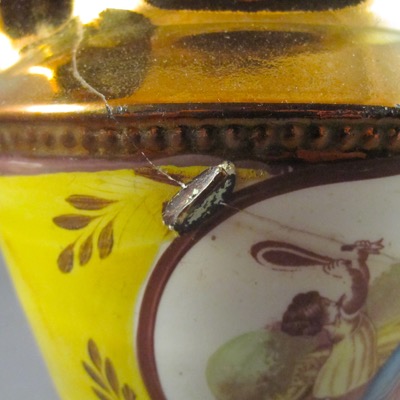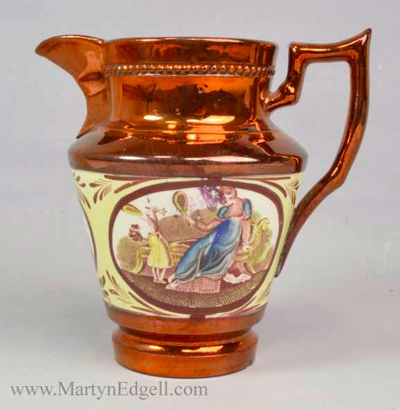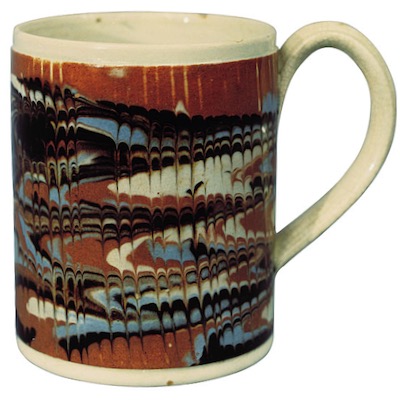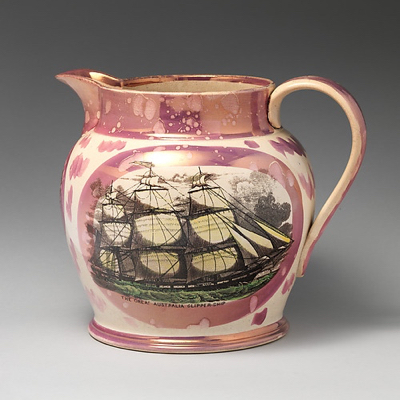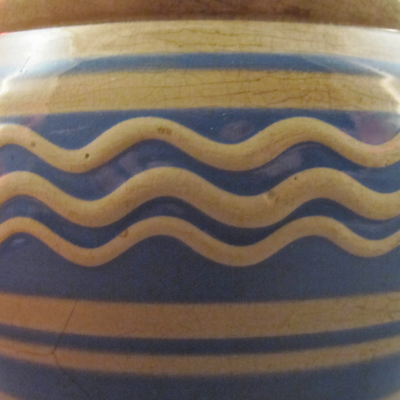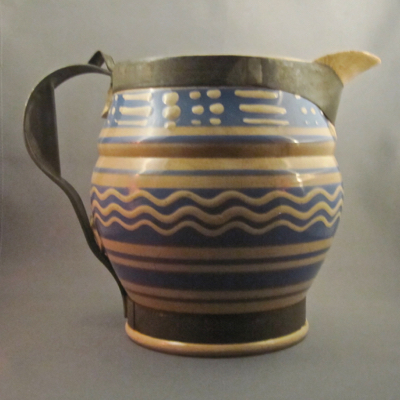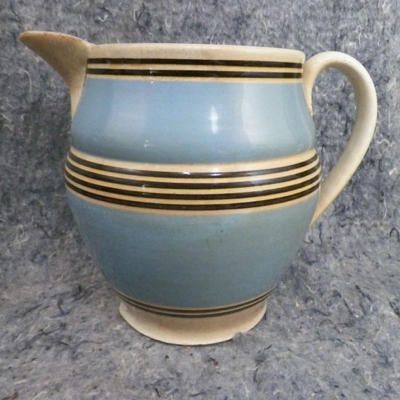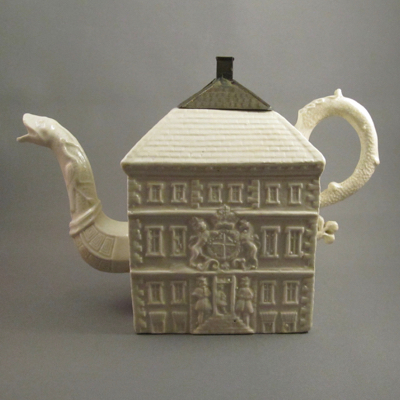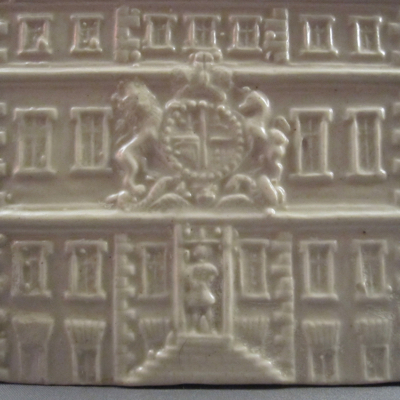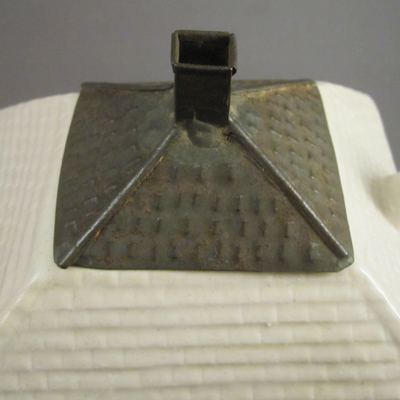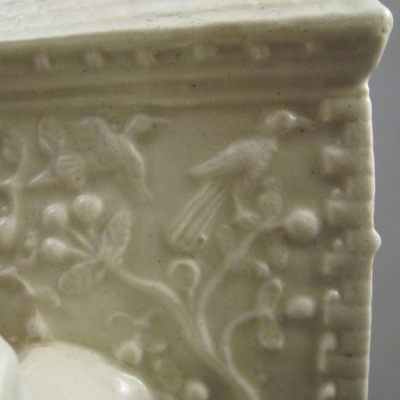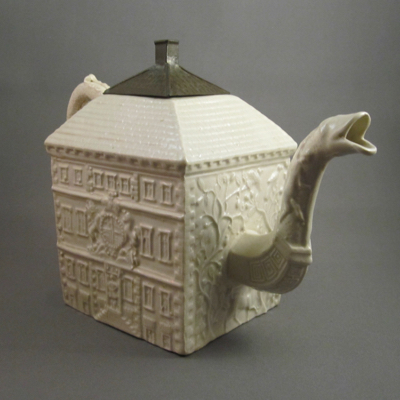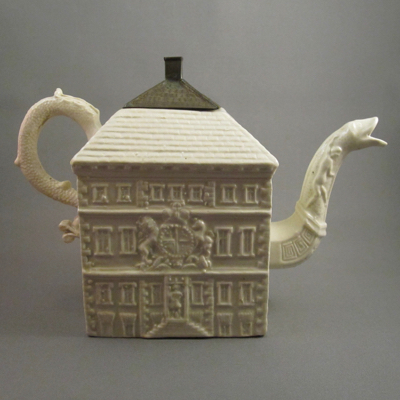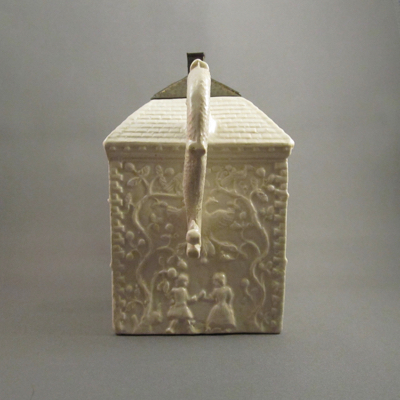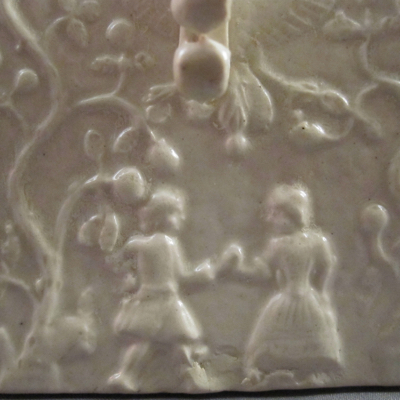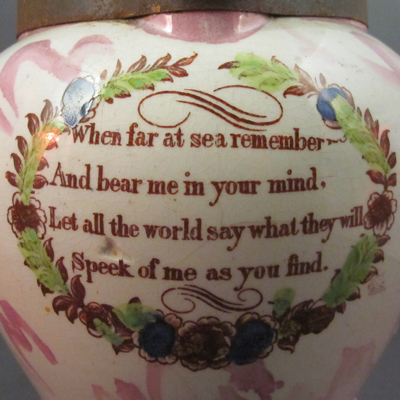This porcelain serving dish was made in England by Royal Crown Derby in 1905. It is hand painted in the Imari palette of cobalt blue, iron red, and gilt. On the underside is a red printed mark ROYAL CROWN DERBY, ENGLAND with cypher and an incised mark DERBY, 7-04, dating it to 1905. It measures 10 inches by 7 inches and is 1.75 inches high.
Although two painted metal staples on top of one of the handles hint at what is hiding below deck, it isn’t until this pretty dish is flipped over that things gets more interesting. After this dish fell to the floor and shattered into 9 pieces, it was taken to a china mender, who made it whole again by drilling 68 tiny holes and adding 34 metal staples. Typically china menders charged per staple, so this repair job must have cost the owner a pretty penny.










